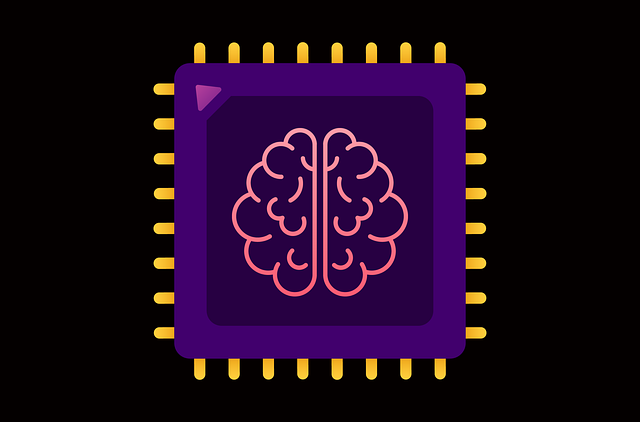Edge AI: Bringing Intelligence Closer to Data Sources

Imagine a world where machines possess the ability to process vast amounts of data, make intelligent decisions, and respond swiftly without relying on constant internet connectivity. This visionary concept is becoming a reality with Edge AI, a groundbreaking technology that brings intelligence closer to data sources. In this article, we will delve into the fascinating realm of Edge AI and explore its implications for various industries.
So, what exactly is Edge AI? Think of it as a fusion of two powerful domains—artificial intelligence and edge computing. Unlike traditional AI systems that rely on centralized cloud servers to perform complex computations, Edge AI takes a different approach. It leverages the computational power of local devices, such as smartphones, IoT devices, and even edge servers, to process data and perform AI tasks right at the source, without the need for constant internet connectivity or transferring data to remote servers.

The benefits of Edge AI are immense. By bringing intelligence closer to data sources, it enables real-time decision-making, minimizing latency and ensuring faster response times. Consider the example of autonomous vehicles. With Edge AI, these vehicles can analyze sensory data in real-time, making split-second decisions to avoid obstacles or respond to changing road conditions without depending on a distant cloud server. This not only enhances safety but also enables uninterrupted operation even in areas with poor network coverage.
Moreover, Edge AI offers enhanced privacy and security. Since data processing occurs locally, sensitive information can be processed and analyzed within the confines of the device or edge server, reducing the risk of data breaches and unauthorized access. This aspect is particularly crucial in applications like healthcare, where patient data needs to be protected.
The potential applications of Edge AI span across various industries. In manufacturing, it can optimize production processes by enabling predictive maintenance and real-time quality control. In retail, it can personalize customer experiences by analyzing shopping patterns and offering tailored recommendations. In smart cities, it can enhance efficiency by optimizing energy consumption and traffic management. The possibilities are vast, limited only by our imagination.
Edge AI represents a paradigm shift in the way we harness artificial intelligence. By bringing intelligence closer to data sources, it unlocks tremendous potential for real-time decision-making, increased security, and improved privacy. As this technology continues to evolve, we can expect transformative changes across industries, paving the way for a smarter and more connected future. Get ready to witness the power of Edge AI as it revolutionizes the world around us.
Revolutionizing Data Processing: How Edge AI is Transforming Industries
Have you ever wondered how data processing is evolving and changing the way industries operate? Well, get ready to be amazed because Edge AI is here to revolutionize the game. In this article, we’ll delve into the details of how Edge AI is transforming industries, bringing about a new era of efficiency and speed.

So, what exactly is Edge AI? Picture this: instead of relying on a centralized system or cloud for data processing, Edge AI brings the power of artificial intelligence right to the edge of the network. It enables devices to process and analyze data locally, in real-time, without needing constant connectivity. This means faster decision-making, reduced latency, and enhanced privacy and security.
Industries across the board are benefiting from this groundbreaking technology. Take healthcare, for instance. With Edge AI, medical devices embedded with intelligent algorithms can analyze patient data instantly, enabling timely diagnoses and personalized treatments. This not only saves lives but also reduces the burden on healthcare professionals and facilities.
The manufacturing industry is also experiencing a tremendous transformation thanks to Edge AI. By deploying AI-powered sensors and cameras at the edge, manufacturers can monitor production lines in real-time, detecting anomalies and predicting maintenance needs. This level of automation optimizes operational efficiency, minimizes downtime, and improves overall productivity.
Transportation is another sector being reshaped by Edge AI. Autonomous vehicles equipped with edge computing capabilities can make split-second decisions based on sensor data, ensuring safer and more efficient journeys. Additionally, traffic management systems powered by Edge AI can analyze vast amounts of data from various sources, optimizing traffic flow and reducing congestion.
But it doesn’t stop there. Edge AI is making its mark in various other fields like agriculture, retail, energy, and more. From smart farming practices that optimize crop yield to cashier-less stores that provide seamless shopping experiences, Edge AI is transforming the way we live and work.
Edge AI is a game-changer when it comes to data processing. Its ability to bring intelligence to the edge of the network is revolutionizing industries by enabling faster decision-making, improved efficiency, and enhanced security. With its wide-ranging applications, Edge AI is paving the way for a future where smart devices and intelligent systems work hand in hand to create a more connected and efficient world. The possibilities are endless, and we can’t wait to see what other incredible advancements lie ahead.
Unlocking the Power of Real-Time Insights: The Rise of Edge AI
Imagine a world where devices possess the ability to process and analyze data in real-time, delivering instant insights and enhancing our daily lives. This is now made possible through the rise of Edge AI, a revolutionary technology that brings intelligence closer to the source of data generation. In this article, we will explore how Edge AI is transforming industries and unlocking a new realm of possibilities.
At its core, Edge AI refers to the deployment of artificial intelligence algorithms and models on edge devices such as smartphones, sensors, and IoT devices. Unlike traditional AI systems that rely on cloud-based processing, Edge AI enables data analysis to occur directly on the device itself. This proximity to the data source reduces latency, enhances privacy, and allows for immediate decision-making. It’s like having an intelligent brain right at the fingertips of your devices.
One of the key benefits of Edge AI is its ability to provide real-time insights. Consider a self-driving car navigating through busy city streets. With Edge AI, the car can quickly process vast amounts of sensor data, identify obstacles, and make split-second decisions to ensure passenger safety. This is possible because the AI algorithms are running directly on the car’s onboard computer, enabling it to react instantaneously to changing road conditions.
Edge AI is not limited to autonomous vehicles alone. Industries such as healthcare, manufacturing, and retail are also leveraging its power. In healthcare, wearable devices equipped with Edge AI can continuously monitor vital signs, detect anomalies, and alert medical professionals in real-time. This proactive approach to healthcare empowers individuals to take control of their well-being while providing timely interventions when needed.
In manufacturing, Edge AI enables predictive maintenance by analyzing sensor data from machinery. By detecting early warning signs of equipment failure, companies can schedule maintenance before breakdowns occur, minimizing production downtime and saving costs. Furthermore, in the retail sector, Edge AI is utilized to personalize customer experiences by analyzing shopping patterns, preferences, and real-time inventory data. This enables retailers to offer tailored recommendations, optimize stock levels, and deliver an exceptional shopping experience.
Edge AI is ushering in a new era of real-time insights and transforming the way we interact with technology. By bringing intelligence to the edge devices themselves, we are unlocking a world of possibilities across various industries. From self-driving cars to personalized healthcare and predictive maintenance, the potential applications of Edge AI are vast. As this technology continues to evolve, we can anticipate even more amazing advancements that will shape the future of our interconnected world.
Edge AI Takes Center Stage: Accelerating Decision-Making at the Edge
In today’s fast-paced world, where every millisecond matters, businesses and individuals are constantly seeking ways to optimize their processes and enhance decision-making. This increasing demand has paved the way for a groundbreaking technology known as Edge AI, which is revolutionizing the way data is processed at the edge of the network.
But what exactly is Edge AI? Imagine a scenario where a self-driving car needs to make split-second decisions to avoid an obstacle. Traditional cloud-based AI systems would send the car’s data to the cloud for processing, leading to delays and potential risks. Edge AI, on the other hand, brings the power of artificial intelligence and machine learning algorithms directly to the edge devices, enabling real-time decision-making without relying on cloud connectivity.

One of the key advantages of Edge AI is its ability to significantly reduce latency. By processing data locally, right at the edge devices, Edge AI eliminates the need for round trips to the cloud, resulting in faster response times. This is especially critical in applications where immediate action is required, such as industrial automation, autonomous vehicles, and healthcare monitoring systems.

Moreover, Edge AI offers enhanced privacy and security. Since data is processed locally, sensitive information can be kept within the device itself, reducing the risk of data breaches or unauthorized access. This is particularly important in industries that deal with confidential data, like finance, healthcare, and government sectors.
Another compelling aspect of Edge AI is its ability to operate in offline or low-connectivity environments. Unlike cloud-dependent systems, Edge AI solutions can continue to function even when there’s limited or no internet connectivity. This makes it ideal for use cases in remote areas, where internet access may be unreliable or unavailable.
The potential applications of Edge AI are vast and diverse. From smart cities and intelligent surveillance systems to real-time analytics in sports and entertainment, this technology is empowering organizations to make faster, smarter decisions with greater efficiency and accuracy.

Edge AI is taking center stage as it accelerates decision-making at the edge. By leveraging the power of artificial intelligence and processing data locally, Edge AI offers reduced latency, enhanced privacy, offline capability, and a wide range of applications across various industries. As this technology continues to evolve, we can expect even more remarkable developments that will reshape the way we interact with intelligent systems and drive us towards a future where instantaneous decision-making becomes the norm.
From Cloud to Edge: How Edge AI is Redefining Data Analytics
Have you ever wondered how technology has evolved to make our lives easier and more efficient? One of the latest trends that is revolutionizing data analytics is Edge AI. In this article, we will delve into the fascinating world of Edge AI and explore how it is redefining data analytics.
Before we dive into the details, let’s first understand what Edge AI is all about. In simple terms, Edge AI refers to the deployment of artificial intelligence algorithms on edge devices, such as smartphones, IoT devices, and local servers, rather than relying on a centralized cloud infrastructure. This allows data processing and analysis to be done closer to the source, resulting in faster response times and reduced dependency on cloud connectivity.
So, how exactly is Edge AI transforming data analytics? Well, imagine a scenario where you have a fleet of delivery trucks equipped with sensors. Traditionally, all the sensor data would be sent to the cloud for analysis, causing delays and consuming significant bandwidth. With Edge AI, these sensors can process the data locally and only transmit the insights back to the cloud. This not only minimizes latency but also reduces the amount of data that needs to be transmitted, resulting in cost savings.
Moreover, Edge AI enables real-time decision-making. Take the example of a self-driving car. It needs to process vast amounts of sensor data instantly to navigate through traffic. By utilizing Edge AI algorithms directly on the car’s onboard computer, it can make split-second decisions without relying solely on cloud-based computations. This ensures safety and reliability even in environments with poor or no network connectivity.
Another significant advantage of Edge AI is enhanced privacy and security. Since data processing and analysis occur locally on edge devices, sensitive information can be kept within a secure environment, reducing the risk of data breaches. This is particularly crucial in industries like healthcare and finance, where privacy regulations are stringent.
Edge AI is transforming the landscape of data analytics by bringing processing power and intelligence closer to the data source. With faster response times, real-time decision-making, and enhanced privacy, Edge AI is revolutionizing various industries and opening up new possibilities for innovation. As technology continues to advance, we can expect Edge AI to play a pivotal role in shaping the future of data analytics.




